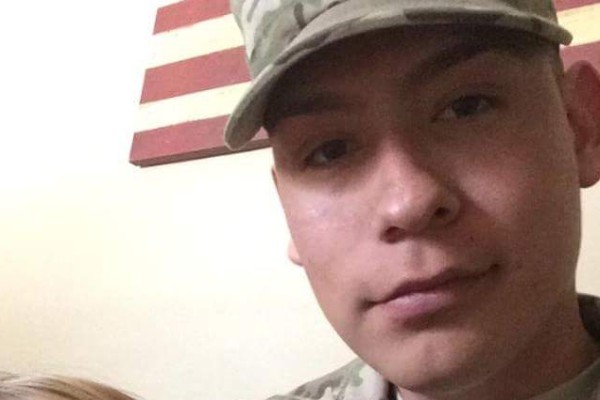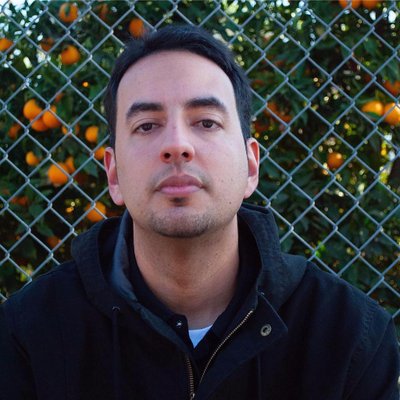
Edwin Fuentes, a former infantryman who served during the War in Afghanistan, survived when his Humvee came under fire while deployed. The 25-year-old Tustin resident, who suffered from Post-Traumatic Stress Disorder (PTSD) after the war, returned to civilian life only to die in a police shooting during an hours-long standoff last May. After completing an investigation, the Orange County District Attorney’s (OCDA) office announced yesterday that the officer who opened fire wouldn’t be charged.
“We’re mainly looking at any evidence of criminal culpability on the part of any police officer in connection with this incident,” said Ebrahim Baytieh, assistant district attorney, at the OCDA press conference. “We merely looking at it to make a determination if this shooting was legally and lawfully justified.”
The day’s troubles began when Fuentes opened an email on May 16 informing him that he failed out of a MRI program at Career Network Institute (CNI) College in Orange. Fuentes stood to lose financial aid through the GI Bill and scholarship money. The news unraveled him. That afternoon, he packed a gun in a gym bag and headed to the college campus. Fuentes sent disturbing text messages to his wife and classmate; the latter contacted Santa Ana police to inform them that his friend was armed and a danger to himself.
According to the OCDA report, Fuentes returned home to his Tustin apartment a few hours later and began dressing in his military fatigues before leaving again. His concerned wife informed Santa Ana police that her husband was suicidal and suffered from PTSD. Officers contacted Tustin Police Department who arrived on scene and found Fuentes parked in his car inside the apartment complex’s gates.
An hours-long standoff ensued around 7:15 p.m. Officers Timothy Carson and Michelle Jankowski first tried to deescalate the situation with Fuentes holding a handgun to his head saying he wanted to die in uniform. When they proved unsuccessful, Santa Ana officer Jorge Arroyo, an army veteran, took over crisis negotiations a half-hour later. Arroyo tried to build a rapport with Fuentes but ultimately concluded the troubled vet remained committed to killing himself or provoking a suicide-by-cop scenario.
In body-camera videos publicly released under the OCDA’s new disclosure policy, a distraught Fuentes can be heard. “I want to see my wife and you guys can’t even do that for me,” he said to police. Fuentes told cops at the scene that he had no intention of harming them, only himself. He also invited officers to shoot him. By then, police transferred Fuentes’ wife and father-in-law to a nearby command center. They didn’t grant the request to see his wife out of fear he’d only take the opportunity to kill himself in front of her.
At no time did outside mental health professionals arrive on scene. On three occasions, Fuentes fired single rounds downward into the car. Police didn’t respond with deadly force. Instead, they recorded a tearful plea from Fuentes’ wife. “Just hang in there, okay,” she said in the recording they played. “We need you.” But the message failed to sway him to surrender the weapon and get out of the car.
As night fell, Tustin officer Michael Carter took position atop a car point facing Fuentes. In the fatal, decisive moment, Fuentes’ car crawled towards officers down below. When he began raising his gun in their direction, Carter felt compelled to fire seven rounds at Fuentes for their safety. Dash camera footage released by OCDA is too dark to observe much else besides plumes of smoke emitted from Carter’s rifle after each successive shot.
Fuentes didn’t register a pulse and stopped breathing when officers pulled him from his car. A doctor at the Orange County Global Medical Center later pronounced him dead at 9:30 p.m. An autopsy showed Fuentes died from two gunshot wounds; a third only grazed his head.
“Officer Carter was justified in believing that Mr. Fuentes posed a deadly harm to the officers that were exposed at the time that officer Carter discharged his weapon,” said Baytieh. “The evidence clearly shows that the officers tried for almost two hours to deescalate the situation.” With that, the OCDA closed its inquiry into the case and cleared another officer-involved shooting.
As always, read the report in its entirety online.

Gabriel San Román is from Anacrime. He’s a journalist, subversive historian and the tallest Mexican in OC. He also once stood falsely accused of writing articles on Turkish politics in exchange for free food from DönerG’s!

